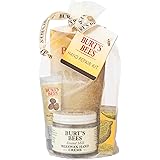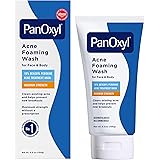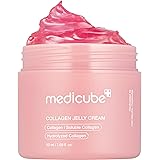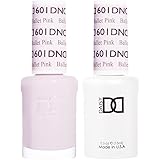Decoding Makeup Powders: Loose, Pressed, Setting, and Finishing Explained
Navigating the vast world of makeup can often present a perplexing challenge, especially when faced with the array of powders available. Many beauty enthusiasts find themselves unsure about the distinct purposes of loose, pressed, setting, and finishing powders, leading to confusion and sometimes less-than-ideal application results. However, with a clear understanding of each type, a truly flawless and long-lasting complexion can be achieved with greater ease. The video above provides an excellent initial overview, and this accompanying article aims to further elaborate on the nuances, helping you select and apply the perfect makeup powders for every step of your beauty routine.
Unpacking the Basics: Loose vs. Pressed Powders
The fundamental distinction between loose and pressed makeup powders lies in their form and convenience. While the difference in packaging is evident, the way these powders interact with the skin and contribute to your overall look is significantly varied. It is believed that each type holds a unique place in a comprehensive makeup kit.
Loose Powder: The Veil of Refinement
Loose powders are typically presented in a jar, consisting of very fine, unbound particles. This category is widely favored by many professional makeup artists and those who prioritize a lightweight, seamless finish. A key characteristic of loose powders is their often finely milled consistency, meaning the particles are ground to an extremely small size. The benefit of this meticulous milling is that the powder feels exceptionally silky upon application and virtually disappears into the skin, preventing a heavy or cakey appearance.
Imagine if your makeup could feel weightless yet stay perfect all day. This is often the experience reported by users of finely milled loose powders. They are primarily used to set foundation, absorb excess shine and oil, and ensure makeup longevity. Furthermore, loose powders are commonly found in translucent formulas, which means no additional pigment or coverage is added to your foundation. This is a significant advantage for those who wish to maintain the exact shade and finish of their base makeup, merely enhancing its staying power and matte effect. These powders are particularly beneficial for more mature skin, as their light texture is less likely to settle into fine lines or accentuate skin texture, especially around delicate areas like the under-eye. For example, the Dermablend powder is renowned for being “triple milled,” a process that ensures an ultra-fine texture that simply vanishes on the skin while softly mattifying.
In addition, the Lancôme Longtime No Shine powder is frequently praised for its ability to deliver a velvety matte finish and visibly blur pores, contributing to a smoother skin appearance that endures throughout the day. For those seeking a subtle luminosity rather than a completely matte look, powders like the luxurious La Mer loose powder, which can be priced around $100, or the equally beautiful Hourglass and Koh Gen Do options, offer a delicate, soft radiance due to micro-refined reflective pigments. However, for those seeking a more budget-friendly yet effective option, the Revlon Candid loose powder is often cited as a superb drugstore alternative, providing a natural, sheer, and shine-absorbing finish.
Pressed Powder: Convenience in a Compact
In contrast to their loose counterparts, pressed powders are compacted into a solid form, usually presented in a convenient compact. This format is undeniably user-friendly and highly practical for on-the-go applications and quick touch-ups. The portability of pressed powders means they can easily be carried in a purse, allowing for quick adjustments throughout the day without the potential mess associated with loose powder containers.
Consider a busy day, where quick touch-ups are essential. A pressed powder compact becomes an indispensable tool. While translucent pressed powders are available, it is more common to find them in tinted versions, meaning they contain a certain amount of pigment. This added color provides a degree of coverage, making pressed powders a dual-purpose product that can set makeup and offer a slight boost in coverage. They can be particularly useful for individuals who prefer sheer foundations or tinted balms and desire just a little extra coverage without applying a full foundation layer.
However, a crucial point of consideration arises when using tinted pressed powders for frequent touch-ups. If applied multiple times throughout the day, the cumulative layers of pigment can lead to a heavier, even cakey, appearance on the skin by day’s end. This effect occurs because additional makeup is continually layered upon existing products, potentially diminishing the natural look initially achieved. For those who need to manage shine without adding substantial coverage, a translucent pressed powder or even blotting papers would be a more advisable choice for touch-ups. Highly regarded pressed powders include the No7 Lift & Luminate, which magically blurs pores, the Physicians Formula Butter Believe It powder, known for its smoothing effect, and the Charlotte Tilbury Airbrush Flawless Finish powder, a staple for many touch-up routines.
Setting vs. Finishing Powders: Understanding Their Unique Roles
While the terms “setting” and “finishing” powders are sometimes used interchangeably, their primary functions and ideal application steps are distinct. Recognizing these differences is paramount for achieving the desired outcome in your makeup application.
Setting Powder: The Foundation’s Best Friend
A setting powder serves as a foundational step in ensuring makeup longevity. Its principal purpose is to “set” liquid or cream foundation, concealer, and other base products. This action helps to absorb any residual moisture or oil, thereby preventing the foundation from transferring, smudging, or creasing throughout the day. Applied directly after your foundation and concealer, a setting powder acts as a protective barrier, locking everything into place. It is designed for daily use and forms an integral part of most makeup routines, contributing significantly to how long your makeup will wear.
Picture your meticulously applied foundation staying pristine from morning till night, resisting the effects of humidity and natural skin oils. That consistent wear is largely attributed to a well-chosen setting powder. These powders are widely available in both loose and pressed forms, offering flexibility depending on personal preference and application needs. Their goal is functional: to stabilize your base makeup and extend its wear, offering a reliably matte or naturally finished look that endures.
Finishing Powder: The Photo-Ready Enhancer
In contrast, a finishing powder is typically applied as the final step in a makeup routine, *after* all other products, including setting powder, have been applied. Its role is primarily cosmetic, designed to refine the skin’s texture, blur the appearance of pores, and impart an overall smooth, airbrushed effect. Finishing powders are often formulated with light-reflecting particles that work to diffuse light, minimizing the visibility of imperfections, which can be particularly advantageous in photographs or under harsh lighting conditions. Envision your skin appearing airbrushed and flawless under bright lights; this is the transformative power of a good finishing powder.
It must be acknowledged that there is some overlap in benefits between setting and finishing powders; many modern setting powders also offer pore-blurring and smoothing qualities. However, finishing powders tend to specialize in these textural improvements. Due to their specific purpose, finishing powders are generally not recommended for daily use. Instead, they are best reserved for special occasions such as weddings, events where photos will be taken, or any situation where a truly perfected, “filter-like” skin appearance is desired. Applying multiple layers of various powders daily can risk a heavy, unnatural, or cakey finish. The YSL 3D All Over Glow, often considered a radiant setting powder, exemplifies how a product can blur and give a soft luminosity, fulfilling a finishing powder’s promise. Additionally, specialized powders with a peach or banana tone are often used as finishing powders, as their subtle color-correcting properties can brighten the complexion and provide an extra touch of radiance.
Expert Tips for Powder Application
Achieving a seamless, non-cakey finish with makeup powders requires thoughtful application techniques. The right tools and approach can make a significant difference in the final look and feel of your makeup.
-
Brush Selection Matters: The type of brush used greatly influences how powder is distributed. For light, sheer application, especially with loose powders or radiant finishing powders, a large, fluffy powder brush (like the BK Beauty 103 mentioned) is ideal. This allows for a gentle dusting that sets makeup without depositing too much product. Conversely, a denser brush might be employed for targeted application, perhaps for pressing powder into areas prone to shine, but care must be taken to avoid over-application.
-
Light Layers Are Key: Regardless of the powder type, the principle of applying light layers is paramount. It is far better to build up coverage or mattifying effects gradually than to apply too much at once, which can lead to a heavy, visibly powdery, or cakey finish. A thin veil of powder is usually sufficient to set makeup and control shine.
-
Blot Before Touch-Ups: For individuals with oily skin who require touch-ups throughout the day, it is highly recommended to gently blot away excess oil before applying more pressed powder. This prevents the powder from mixing with accumulated oil and creating a muddy or streaky appearance. Blotting ensures that the new layer of powder adheres to a relatively clean surface, maintaining a fresh look.
-
Targeted Application for Ageing Skin: When working with mature skin, a finely milled loose powder is often preferred, particularly for setting the under-eye area. Its delicate texture is less likely to emphasize fine lines or dry patches. Application should be sparse and focused only where needed, such as the T-zone, rather than across the entire face, to maintain a youthful and natural appearance.
Navigating Powder Choices: Translucent, Tinted, and Beyond
The vast range of makeup powders extends beyond just their form, encompassing different finishes and pigments. Understanding these options empowers you to make informed decisions tailored to your specific beauty needs and desired aesthetic.
Translucent Powders: The Invisible Worker
Translucent powders are formulated without any color or pigment, making them universally adaptable across all skin tones. Their primary function is to set makeup and absorb oil without altering the shade of your foundation or concealer. This makes them an excellent choice for anyone who wishes to simply lock in their base makeup and achieve a matte or natural finish without adding any additional coverage. They are particularly favored for their ability to provide an invisible veil, ensuring that the true color of your complexion and underlying makeup remains unchanged.
Tinted Powders: Boosting Coverage and Correction
Tinted powders, as the name suggests, contain pigment that offers a degree of coverage. This can range from sheer to light-to-medium, depending on the product formulation. They are often chosen by those seeking to unify their skin tone, provide a subtle boost of coverage over a sheer foundation, or even for light makeup days where foundation is skipped entirely. Additionally, specific tinted powders, such as banana or peach-toned varieties, offer color-correcting benefits. Banana powders, with their yellow undertone, are adept at brightening the under-eye area and neutralizing redness, while peach powders can help counteract dark circles. However, caution is advised when layering tinted powders, as excessive application can lead to a heavier, less natural finish.
Radiant vs. Matte Finishes: Your Preference, Your Power
The finish a powder provides is another crucial factor in its selection. Powders can be broadly categorized by whether they offer a radiant or a matte effect.
-
Matte Finish: These powders are designed to absorb oil and eliminate shine, resulting in a velvety, shine-free complexion. They are exceptionally beneficial for individuals with oily or combination skin, or anyone desiring a long-lasting, controlled look. Matte powders ensure that makeup stays put and skin remains non-greasy throughout the day.
-
Radiant Finish: In contrast, radiant powders contain fine, light-reflecting particles that impart a subtle glow or soft luminosity to the skin. They are often chosen by those with normal to dry skin, or individuals who prefer a more ‘healthy’ or ‘dewy’ look rather than a completely matte one. These powders aim to add a dimension of subtle glow, making the skin appear more vibrant and fresh.
Investing in Quality: High-End vs. Drugstore Gems
The price spectrum for makeup powders is incredibly broad, ranging from high-end luxury items to highly effective drugstore alternatives. It is a common misconception that quality is solely dictated by price; in reality, many affordable options deliver impressive performance.
Luxury powders, such as La Mer or Hourglass, often boast exceptionally finely milled textures, unique ingredient blends, and sophisticated packaging. Their formulations might include skincare benefits or provide a particularly refined finish that justifies their higher cost for some users. However, the beauty industry is continually innovating, and many drugstore brands have developed powders that rival their prestige counterparts in terms of texture, longevity, and finish. The Revlon Candid loose powder, for instance, is frequently lauded for its finely milled texture and natural appearance, performing far beyond its modest price point. This demonstrates that excellent quality in beauty powders can be found across all budget levels, allowing consumers to make empowered choices based on their needs rather than just price tags.
The world of makeup powders, while seemingly intricate, is truly an exciting realm once its distinctions are understood. By learning the specific roles of loose, pressed, setting, and finishing powders, and how to best apply them, anyone can elevate their beauty routine to achieve a more polished and enduring finish. Careful consideration of your skin type, desired outcome, and lifestyle ensures that informed decisions are made, empowering you to select the perfect makeup powders that truly enhance your look.











